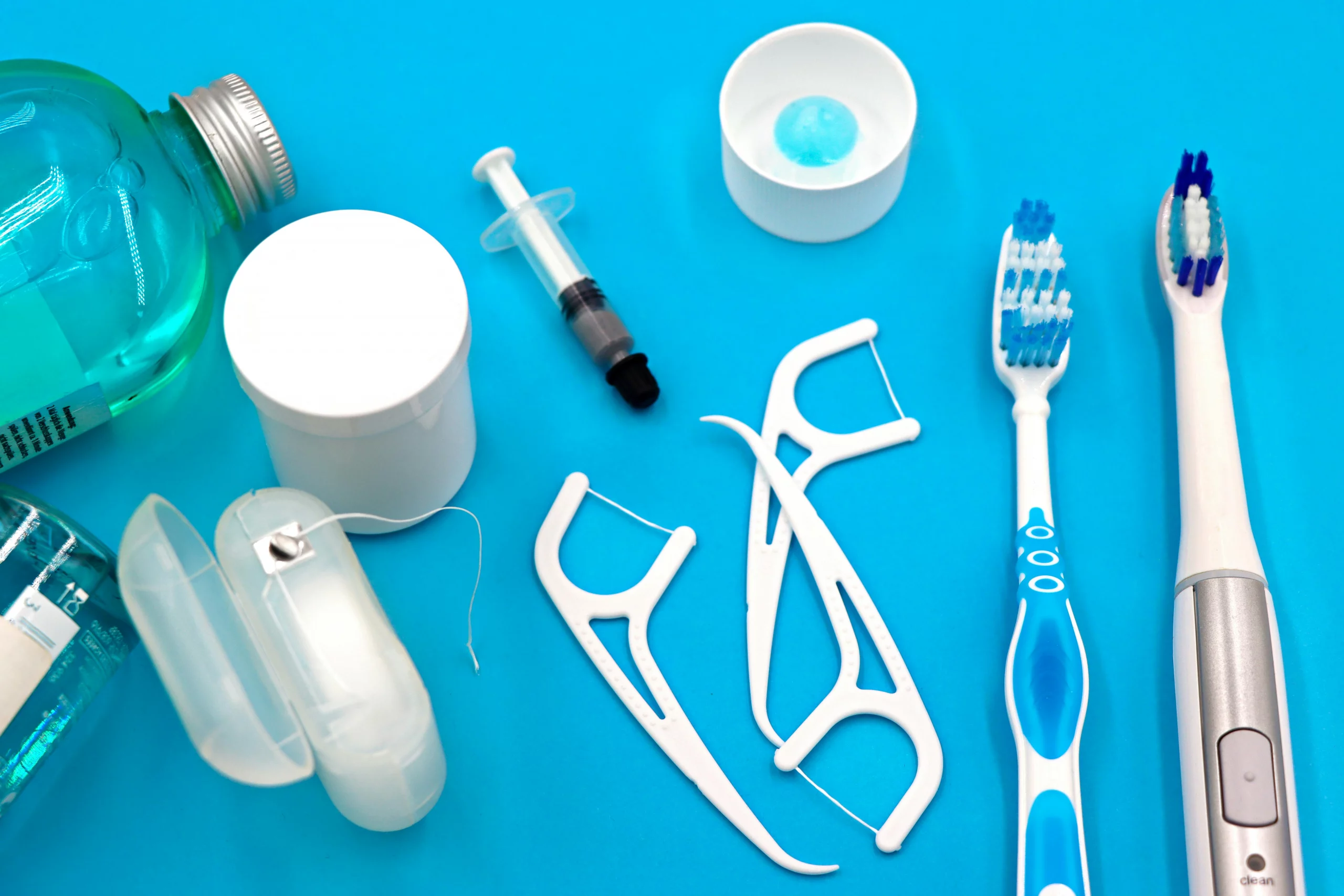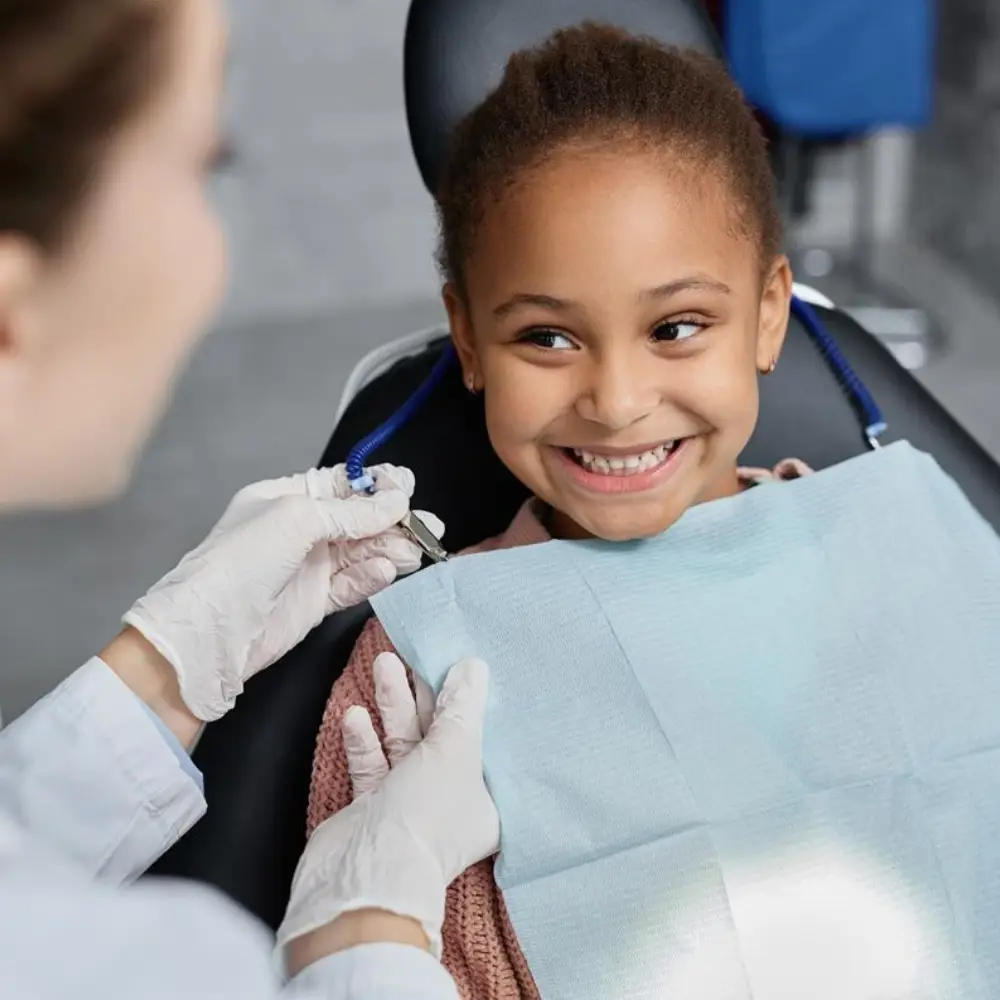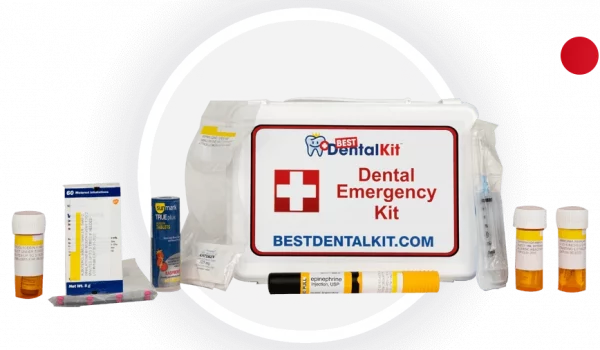Having a dental emergency kit ready can save you from discomfort and costly urgent care visits when you’re away from home. Travel during the summer is often accompanied by a sense of excitement and discovery. Proactively preparing a dental emergency kit is a practical step that can help travelers manage unexpected oral health issues, reducing discomfort and the likelihood of costly urgent care in unfamiliar locations.
This guide outlines essential components for an effective dental emergency kit, offers expert recommendations on assembling the kit, and explains the use of each item. With thoughtful preparation, travelers can safeguard their oral health and approach their summer journeys with greater confidence and peace of mind.
Why You Need a Dental Emergency Kit When Traveling
Even with consistent oral hygiene, unforeseen incidents such as dental injuries or acute pain can arise, often at the most inopportune times, including during vacations. Engaging in activities like swimming, hiking, or sports tends to elevate the risk of dental trauma. Possessing a dental emergency kit facilitates immediate intervention for minor issues, thereby reducing the likelihood of complications or escalation.
When traveling, particularly in remote locations or foreign countries, access to professional dental care may be either limited or logistically challenging. In such circumstances, a well-prepared emergency kit enables individuals to administer provisional care, alleviate discomfort, and minimize potential damage until professional assistance becomes available.
Furthermore, dental treatments and restorative procedures are frequently both costly and time-intensive, often requiring significant healing periods. Prompt management of dental concerns with appropriate tools not only safeguards oral health but may also prevent more severe injuries or infections from developing.
What to Include in Your Dental Emergency Kit

While spontaneous dental issues during travel are rarely anticipated, their occurrence can disrupt even the most well-planned itineraries. Having a thoughtfully assembled emergency dental kit is, quite frankly, a fundamental aspect of travel preparedness. Unexpected problems ranging from a lost filling to acute tooth pain or minor oral injuries can arise without warning, often when access to professional dental care is limited or altogether unavailable.
To mitigate these risks, travelers should equip their kits with essential items: dental wax, temporary filling material, a compact mirror, analgesics, and antiseptic wipes, among others. These tools can provide immediate, albeit temporary, relief—reducing discomfort, minimizing infection risk, and preserving oral health until professional assistance becomes accessible. Ultimately, such preparation not only protects one’s dental well-being but also fosters peace of mind, enabling individuals to engage more fully with the travel experience, unencumbered by preventable dental concerns.
Essential Items
A well-prepared dental emergency kit includes several essential items to help you manage common issues on the go. A small dental mirror allows you to inspect hard-to-see areas inside your mouth, while tweezers come in handy for removing debris or tiny objects stuck between teeth. Temporary dental filling materials, such as dental cement or wax, can be used to cover a lost filling or a cracked tooth until you can see a dentist. Dental floss is perfect for dislodging trapped food that might cause discomfort or infection.
Over-the-counter pain relief medications like ibuprofen or acetaminophen help ease dental pain and reduce inflammation. Antiseptic mouthwash or oral rinses lower bacteria levels in your mouth and help prevent infection. Cotton balls and gauze pads are useful for controlling bleeding or protecting a sensitive tooth. Cold packs can reduce swelling and numb pain from dental injuries, while oral anesthetic gels provide temporary relief by numbing painful areas in your mouth.
In addition to these essentials, some optional but highly recommended extras can improve your comfort and care. Carrying an extra toothbrush and travel-sized toothpaste helps maintain good oral hygiene during emergencies. Orthodontic wax offers relief from irritation caused by braces or other dental appliances. A small mirror with an LED light enhances visibility for inspecting your mouth, especially in low-light conditions. Together, these items help ensure you’re ready to handle dental emergencies quickly and effectively, giving you peace of mind while traveling.
Tips for Packing and Using Your Dental Emergency Kit
Possessing an adequately stocked dental emergency kit is just the beginning; understanding how to organize and utilize each component is equally vital. It’s insufficient to simply gather supplies without considering their arrangement or purpose—especially when swift action might be necessary. Maintaining an orderly, accessible kit ensures that, in the event of a dental emergency during travel, you can promptly locate and use the necessary items. Let us examine strategies for efficiently packing your kit and maximizing its effectiveness when urgent dental needs arise.
Choose a Compact, Durable Container
When assembling a dental emergency kit for travel, the choice of container is a foundational consideration. Opt for a small, yet durable case—ideally constructed from hard plastic or reinforced nylon—to ensure resilience against external pressure and potential impact during transit. Compactness is essential so the kit can fit conveniently within a carry-on, backpack, or handbag without occupying excessive space. Water-resistant or waterproof materials are highly advantageous, as these shield the kit’s contents from humidity, accidental spills, and inclement weather. Organizational features such as interior compartments or elastic loops further enhance functionality by preventing items from shifting during travel and facilitating easy access when needed.
Keep Instructions Handy
In high-stress scenarios, particularly those involving oral pain or injury, cognitive function may be compromised. An accessible instruction sheet—written in straightforward, unambiguous language—can provide critical guidance on the correct use of each component in the kit. Instructions should address procedures such as the application of temporary filling materials, management of oral bleeding, or proper rinsing of a tooth socket. Visual aids, including diagrams or photographs, can further enhance comprehension. Laminating the instructions or utilizing waterproof paper is advisable to protect this resource from moisture or accidental damage.
Store Medications Properly
Pharmaceutical elements such as analgesics, antiseptic gels, and oral anesthetics are indispensable within a dental first aid kit. These should always be stored in their original packaging, which preserves vital information regarding dosage, expiration, and ingredients. This practice is also essential for compliance with airline and border security regulations, which often require medications to be clearly labeled. To prevent exposure to extreme temperatures or moisture, medications should be placed in sealed plastic bags or small containers within the kit. Individuals carrying prescription medications should also include a copy of the prescription or a physician’s note to facilitate verification if necessary.
Familiarize Yourself with Common Dental Emergencies
Proficiency in responding to common dental emergencies is invaluable when traveling. Prior to departure, familiarize yourself with standard protocols for situations such as:
- Avulsed (knocked-out) teeth: Understand the importance of keeping the tooth moist, ideally in milk or a specialized preservation solution, and seeking prompt professional dental care.
- Fractured crowns or fillings: Learn temporary protective measures to minimize discomfort and prevent further damage until professional intervention is possible.
- Acute toothaches: Be prepared to manage pain using over-the-counter medications and avoid exacerbating factors such as exposure to extreme temperatures or consumption of sugary foods.
- Soft tissue injuries: Master basic techniques for controlling oral bleeding and preventing infection.
Preparation in these areas not only enhances your ability to act decisively but also contributes to more favorable outcomes and reduced discomfort during travel.
How to Handle Common Dental Emergencies While Traveling
Dental concerns remain prevalent irrespective of travel or leisure activities. Unexpected complications such as toothaches, the loss of a filling, or a chipped tooth may arise while one is away from home. It is, therefore, prudent to understand basic management strategies for these scenarios. The following guidance outlines practical steps to address such dental emergencies until professional care becomes available.
Knocked-Out Tooth
In the event of complete tooth avulsion, carefully handle the tooth by the crown, avoiding contact with the root. Rinse the tooth gently with water scrubbing or the use of cleaning agents is not recommended. If feasible, reinsert the tooth into the socket and maintain gentle pressure. If reinsertion is not possible, place the tooth in milk or a commercial tooth preservation solution for transport. Seek professional dental care immediately, as prompt intervention significantly increases the likelihood of successful reimplantation.
Lost Filling or Crown
If a filling or crown is lost, cover the exposed area with temporary dental cement or dental wax, which may be found in an emergency dental kit. This temporary measure protects the underlying tooth structure from further trauma or sensitivity until definitive treatment can be provided by a dental professional.
Toothache or Sensitivity
For acute dental pain or sensitivity, rinse the oral cavity with warm salt water to aid in cleansing and reduce inflammation. Application of an over-the-counter oral anesthetic gel to the affected site can provide localized pain relief. Analgesics such as ibuprofen or acetaminophen may be taken to further manage discomfort, following recommended dosages.
Broken or Chipped Tooth
In the case of a fractured or chipped tooth, gently rinse the mouth and retain any tooth fragments for potential restoration. Temporary materials such as dental wax or filling compound can be used to cover sharp or exposed areas, minimizing the risk of oral injury or heightened sensitivity. Avoid masticating on the affected side and consult a dentist promptly for evaluation and definitive care.
Maintaining Oral Health During Summer Travel
Summer vacation is typically associated with leisure and enjoyment, but maintaining oral health shouldn’t be overlooked during this period. It’s all too easy to let dental care routines slide amid travel and indulgent treats, yet neglect can have lasting consequences. Remember to bring essential oral hygiene tools, such as a toothbrush and toothpaste, even if it means purchasing travel sizes on the go. Moderation is key when it comes to sugary snacks and beverages, as overconsumption can contribute to dental issues. Consistent habits, like brushing before bed regardless of the day’s activities, remain important. Prioritizing these simple practices ensures that oral health does not fall by the wayside during summer adventures.
Frequently Asked Questions (FAQs)
1. Can I prepare a dental emergency kit on my own?
Creating a dental emergency kit is generally a straightforward process. Essential components typically include temporary filling material, over-the-counter analgesics, dental floss, and an antiseptic mouth rinse. These items are useful for managing minor dental concerns during travel. For optimal results, one should consult a dentist prior to departure, especially if there are pre-existing dental conditions or ongoing treatments, to ensure the kit is tailored to individual needs.
2. How long can I use temporary dental materials?
Regarding the longevity of temporary dental materials, these are intended for short-term application, usually lasting only several days to a week. Their function is to provide interim protection and alleviate discomfort until professional dental intervention is available. It is important to arrange follow-up care promptly, as these materials are not substitutes for definitive treatment.
3. What should I do if I lose a tooth while traveling?
In the event of dental avulsion while traveling, it is crucial to act swiftly. Handle the tooth by the crown, avoiding contact with the root. If contaminated, rinse gently with water without scrubbing. Attempt to reinsert the tooth into its socket if feasible; otherwise, store it in milk or an appropriate preservation solution. Immediate emergency dental care is vital, as timely intervention significantly improves the prognosis for tooth retention.
4. Are dental emergency kits allowed on airplanes?
With respect to air travel, most dental emergency kit items are compliant with TSA regulations and may be transported in carry-on luggage. Medications should remain in their original packaging to facilitate security screening. It is advisable to review current TSA guidelines regarding sharp instruments, such as tweezers, prior to packing. For ease of access, keep the kit in an accessible location within your carry-on.
5. How can I prevent dental emergencies during summer travel?
Preventing dental emergencies while traveling requires maintaining proper oral hygiene, refraining from consuming hard foods, and utilizing a mouthguard when participating in contact sports. Scheduling a dental examination prior to travel can help identify and address potential concerns. Staying well-hydrated and carrying a dental emergency kit provide additional safeguards for maintaining oral health during travel.
Headed on a summer getaway? Don’t let a dental emergency ruin your trip! From lost fillings to sudden toothaches, having a well-packed dental kit can save you time, stress, and pain. Our team at GPD Dental can guide you on the essentials you need based on your personal dental history. Schedule a quick pre-travel checkup and travel with peace of mind—knowing your smile is summer-ready!


